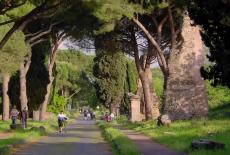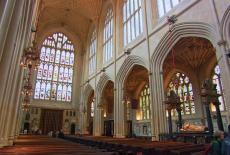Schedule
-
Image
Rick Steves' Art of Europe
Ancient Rome
Saturday
Jan 17
1 Hour
From its architecture to statues, mosaics and frescos, Rome gave Europe its first taste of a common culture; at its peak, the Roman Empire was a society of luxury. -
Image
Rick Steves' Art of Europe
Stone Age to Ancient Greece
Sunday
Jan 18
1 Hour
Mysterious tombs, megaliths and cave paintings emerge from the Stone Age; Egyptians and Greeks lay the foundation of Western art, creating a world of gods, pyramids, temples and lifelike statues. -
Image
Rick Steves' Art of Europe
The Middle Ages
Saturday
Jan 24
1 Hour
Europe spends one thousand years in the Middle Ages following the fall of Rome; the High Middle Ages bring castles, Gothic cathedrals and exquisite art. -
Image
Rick Steves' Art of Europe
Stone Age to Ancient Greece
Sunday
Jan 25
1 Hour
Mysterious tombs, megaliths and cave paintings emerge from the Stone Age; Egyptians and Greeks lay the foundation of Western art, creating a world of gods, pyramids, temples and lifelike statues.
PBS PASSPORT
Stream tens of thousands of hours of your PBS and local favorites with WETA+ and PBS Passport whenever and wherever you want. Catch up on a single episode or binge-watch full seasons before they air on TV.
Similar Shows
Poster Image

Latinos Are Essential
Culture
Poster Image

Self-Evident
Culture
Poster Image

Thomas Hart Benton
Culture
Poster Image

The Address
Culture
Poster Image

Not Done: Women Remaking America
Culture
Poster Image

Prideland
Culture
Poster Image

PBS American Portrait
Culture
Poster Image

College Behind Bars
Culture
Poster Image

Family Pictures USA
Culture
Poster Image

The Warrior Tradition
Culture



